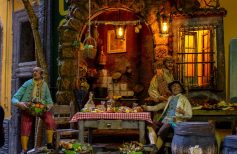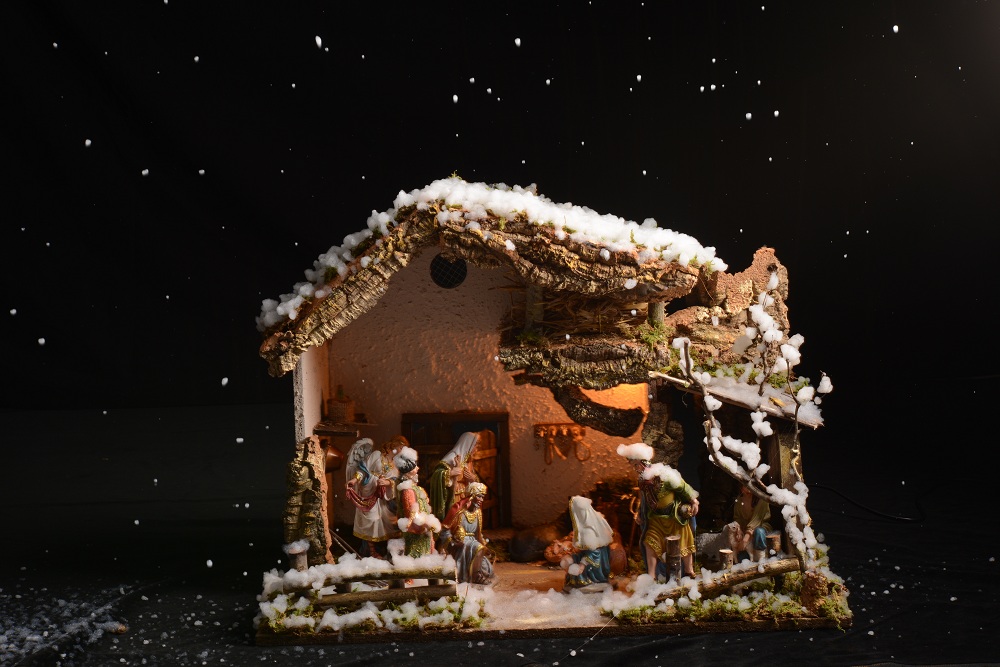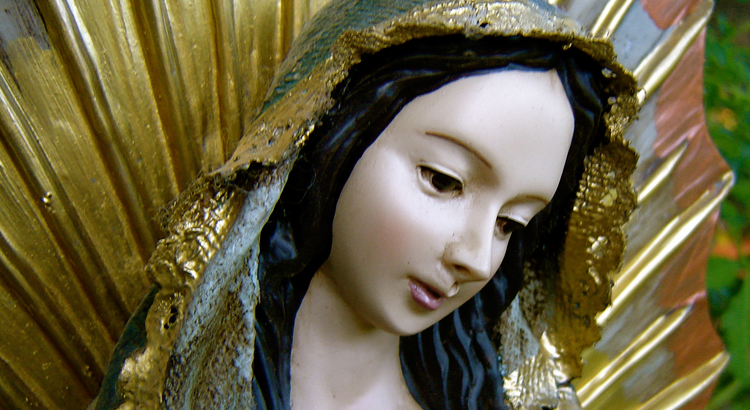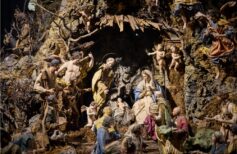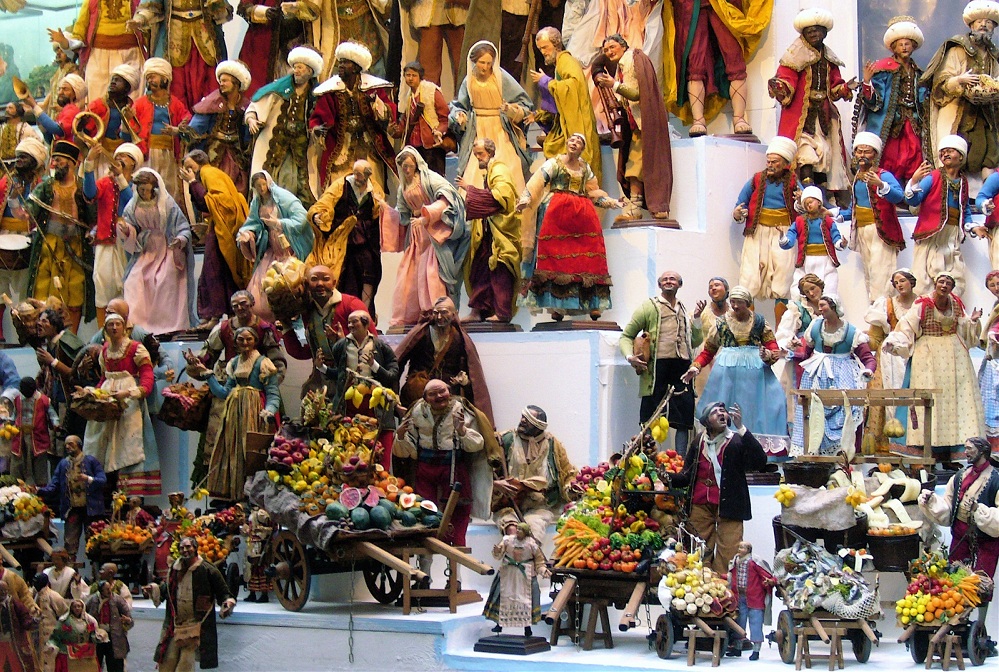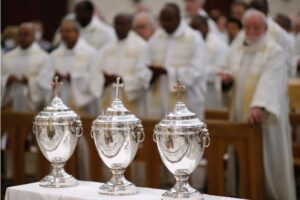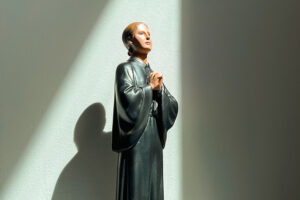The scarabattola is midway between the devotional image and the art object. This is how this ancient and still current art was born.
The name scarabattola has a bizarre, even funny sound, especially considering that what it refers to as funny really has nothing at all. It derives from the Spanish word escaprate, which means showcase, and perhaps also from the dialectal term carabattolo, jar. Certainly, the Spanish definition is more appropriate, considering that the scarabattola, or doodle, is a display case, a display case used to contain a sacred image, an artistic composition depicting a scene from the Holy Scriptures, an episode from the life of Our Lady, Jesus, or a Saint. In fact, the term is also used as a synonym for newsstand, to indicate the container with glass walls intended to protect relics and sacred objects on the occasion of the veneration of the faithful.
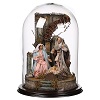
Between the end of the 18th century and the beginning of the 19th century, the scarabattola was considered a real form of art in our country, especially in Neapolitan, Sicily and Rome, where these particular showcases were built with the aim of preserving and protecting sacred works made with materials and decorated with colours that could have been ruined over time from atmospheric agents and wear and tear. We must think that the most appreciated devotional objects in the Neapolitan tradition of the time were small sculptures, often made in imitation of more famous works of art, reproposed in papier-mâché, plaster, ceroplasty (the technique used to make anatomical models at the same time), and often covered with precious fabrics and precious and very, very delicate accessories.
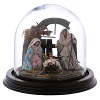
The expressiveness of the characters and the accuracy of the realisation were the reasons why an ancient doodle could be considered in all respects an object of art, worthy of decorating a church, a convent, a family chapel, but also a private house. In fact, unlike the already widespread newsagents and glass cases, which closed the sculpture they guarded from every height, the scarabattola was a real piece of furniture, often made of carved wood, with gilding and ornaments of great value, such as Sicilian scarabattolas, with mother-of-pearl and coral inserts, and one of the glass walls that could be opened.
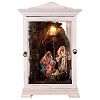
The Nativity scene in a scarabattola
In addition to the scenes taken from the Gospels, such as the flight to Egypt, the Deposition, the Lamentation over the dead Jesus Christ, and the Resurrection, but also the representations of the Child Mary, the scarabattola has always been strongly linked to the Christmas tradition of the Neapolitan Nativity scene. The Neapolitan Nativity scene is a popular art form that expresses a deep, visceral devotion. In it, imagination and faith are mixed to create an expressive form that combines sacred and profane, religious symbolism and folklore, all codified according to ancient and essential rules. In particular, the characters of the Nativity scene of the 18th century in Naples hide deep and surprising meanings, always straddling the traditions of life on the streets of Naples, of the most humble people, with their ugliness and their extravagances, their sins and their longing for Heaven, and mystical symbolism, not necessarily Christian.

The shepherds of the Neapolitan nativity scene of the 1700s: discovering this nativity art
Neapolitan Nativity shepherds are artistic products that come from a…
These characters, and more generally the scenes related to the birth of Jesus, to the so-called Nativity, have always been widely used to fill the scarves. While we can therefore associate this particular art with the world of Neapolitan Nativity scene craftsmen, we must not forget the profound artistic and literary influences of this expressive form, which has survived until now. Even today it is possible to buy wonderful scarves that contain reproductions of scenes from the Nativity and characters from the Nativity scene.
In our online shop, you can also find some, such as the enchanting Nativity in the glass bell, made of resin and protected by a 45 cm high glass bell. The bell can be removed and the sacred composition remains resting on an elegant finely decorated bronze pedestal.
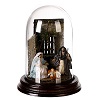
Another example of a valuable scarabattolo that you can find in our shop is the Nativity Scene glass bell in resin.
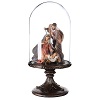
At Christmas, a scarabattolo can replace the traditional Nativity scene in your home, giving it all the charm of a timeless art object at the same time.


